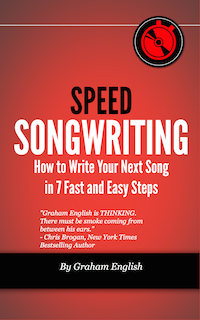
If you’re drowning in sticky notes, voice memos, half-finished lyrics, and forgotten melodies, you’re not alone.
Songwriting can get messy fast. Ideas come at odd times—during your commute, while you’re cooking, or in the middle of the night—and before you know it, you’ve got 20 “inboxes” full of scattered inspiration.
Here’s the thing: disorganized ideas are as good as no ideas. You need a system. A way to sort, store, and prioritize your creative sparks so you can actually use them.
Let’s cut the chaos. Here are three practical strategies to organize your song ideas.
1. Limit the Number of Idea Inboxes
Too many places to store ideas means you’ll waste time hunting for them later. Your iPhone has Voice Memos, Notes, GarageBand, email, and maybe even Dropbox—but do you really need all of them? Probably not.
Start by identifying where your ideas naturally land. Do you tend to hum melodies into your phone? Write lyric snippets in a notebook? Choose two or three reliable tools and commit to them.
For example, you could use Voice Memos for melodies, a single Notes folder for lyrics, and a songwriting app like GarageBand for more developed ideas. Everything else—random sticky notes, old emails, scattered apps—must go.
To clean house, set aside 30 minutes this week to consolidate your ideas. Move everything into your chosen tools, then delete or archive the rest. From now on, every idea goes straight into your streamlined system.
2. Develop a Tagging and Categorizing System
Once your ideas are in one place, you need a way to make sense of them. Otherwise, that genius melody you hummed last week will sit forgotten under a pile of voice memos titled “Untitled #47.”
Tagging is your secret weapon. Start by grouping your ideas into categories like titles, melodies, chord progressions, and concepts. For voice memos, this might mean renaming files as “Melody_FastTempo_0823” or “Chorus_SadBallad.” For lyrics, use folders or tags to sort them by theme, mood, or stage of development (unfinished, draft, finalized).
If you’re using digital tools like Notes or Dropbox, take advantage of search functions. For example, tag every idea with keywords like “love,” “upbeat,” or “acoustic.” When you’re ready to write, searching for “love + upbeat” will bring up everything you’ve stored that fits.
Not a tech person? No problem. Use colored index cards or sticky notes to categorize physical ideas. Yellow for lyrics, blue for melodies, and so on.
3. Schedule Regular Review and Purge Sessions
Even the best system will get cluttered if you don’t maintain it. That’s where review and purge sessions come in. Set aside 30 minutes every week—or at least once a month—to review your ideas.
Ask yourself three questions:
- Is this idea still inspiring?
- Is it ready to move forward?
- Should I let it go?
For ideas that spark excitement, move them to a “priority” folder or tag them as ready to write. For ones that feel stale, archive them. If something feels totally useless, delete it.
Don’t be afraid to let go. Holding onto every half-baked idea creates mental clutter and slows you down. Trust yourself—you’ll always have new ideas.
If you’re worried about deleting something permanently, create a “junk drawer” folder. Toss in anything you’re unsure about. Check back in a month; chances are you’ll feel ready to delete most of it.
How This System Works in Real Life
Let’s say you’ve got an idea for a breakup song. You hum a melody into Voice Memos, jot down some lyrics in Notes, and record a chord progression in GarageBand.
Step 1: Limit your inboxes. You use Voice Memos for the melody, Notes for lyrics, and GarageBand for chords. No scraps of paper, no scattered apps.
Step 2: Categorize and tag. Rename the voice memo “Melody_SlowBallad_0823” and tag the lyrics in Notes with “breakup” and “melancholy.”
Step 3: Review regularly. At your weekly review session, you decide the melody and chords feel strong, but the lyrics need work. You move the melody and chords to a “priority” folder and leave the lyrics tagged as unfinished.
By keeping your system simple and consistent, you’ve turned a chaotic idea into a clear plan of action.
The Bottom Line
Your creative mind is a powerful tool—but without organization, it’s like a messy desk. The good ideas get buried, and the clutter wastes your energy.
Limiting your inboxes, categorizing your ideas, and reviewing them regularly will keep your inspiration organized and ready to use. You’ll write faster, finish more songs, and feel less overwhelmed in the process.
So, don’t let your best ideas slip through the cracks. Take 30 minutes today to set up your system, and you'll be amazed at how much easier songwriting becomes.

Enter your first name and email address below and click “GET ACCESS NOW!” to get the Speed Songwriting Cheat Sheet delivered to your inbox!
We guarantee 100% privacy. Your information will not be shared.

Leave a Reply